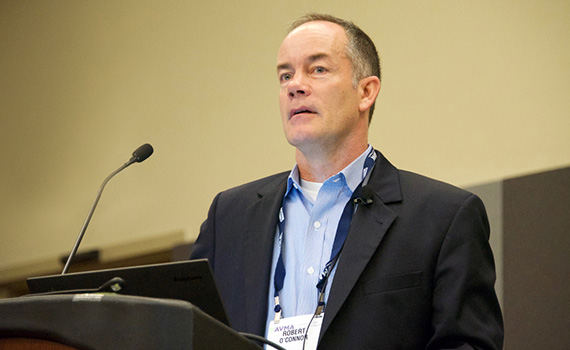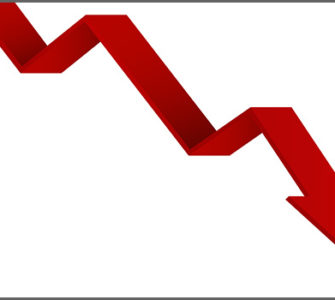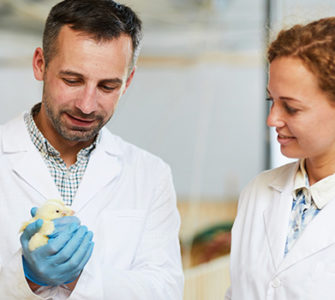Foster Farms’ vet shares tips for managing a food-safety crisis in the poultry industry
You’re a veterinarian at a major poultry company that’s just been slammed by a food-safety crisis. Can you imagine what that’s like? And more important, would you know what to do?
Those were questions posed by Robert O’Connor, DVM, head veterinarian of Foster Farms, in a presentation at the 2016 American Association of Avian Pathologists conference.
O’Connor provided first-hand lessons from his experience in August 2013, when Foster Farms received a call from the USDA and Centers for Disease Control (CDC) that there had been 125 cases of multidrug resistant Salmonella illness in 15 states that seemed to be linked to the company’s products:
“First thing is, you get hit – broadsided. Torpedo hits the side of the ship. You have to take action.”
He offered these tips to his fellow poultry veterinarians:
- Forget the crisis-management plan. While it’s important for every company to have one, he cautioned not to rely on it too heavily. “The crisis management plan is a big abstract. However, it won’t fully address the situational, everyday kind of variables that get thrown at you during a crisis.”The most important chapter, he added, was the plan’s contact list for key people in the company. It will be of little value, however — and also a source of great frustration — if the names, titles and contact information aren’t current. “That’s what is most important in your crisis-management plan — the contact list,” he emphasized, urging veterinarians to make sure it’s updated frequently.
- Take the lead. On qualifying, veterinarians take an oath to use their skills and knowledge to benefit society, and that includes public health. In the cases of a zoonotic crisis such as Salmonella, technical input is essential to identify and implement solutions. The veterinarian, he added, likely has the strongest scientific education and applied experience to fully understand the technical landscape and should guide members of the executive team accordingly.
- Gather key players. Reach out to your network and ask for help, O’Connor recommended. People with a whole range of skills and expertise are needed including a communications officer to handle the media and other external messaging 24/7, and a spokesperson to be the face of the company. Also essential is a scribe to record, for future reference, every discussion within the team and all incoming and outgoing information concerning the case.
- Set up a crisis center – a “war room.” A room needs to be set aside for the sole use of the crisis team. It might be the company’s boardroom, and it must be fully equipped with multiple internet, telephone and teleconference connections.
- Be prepared to take action — quickly. As scientists, he noted, veterinarians usually don’t like to take action without some data to support their actions. “But I am here to tell you, in a crisis, you sometimes do take action without the full data to support you. They don’t want you taking action tomorrow; they wanted it yesterday,” O’Connor said.
- Measure and collect data. The crisis team’s deep understanding of the company’s business will identify possible sources of the problem. Critical thinking will lead to the most likely issues. O’Connor recommended collecting as much data as possible to support the action taken and/or to refine it to bring about a complete solution.
- Learn lessons so the crisis will never be repeated. For Foster Farms, this Salmonella incident was officially closed in July of 2014, a full year after that first call from the USDA and CDC. But O’Connor continues to speak about it, and he explained why. “To me and for the company, it was almost doomsday,” he said. “The guarantees we make to our consumers and customers for quality and safety are our highest priority. So why keep talking about the crisis? Because I want to prevent it from ever happening again.”
What actions did Foster Farms take to resolve the crisis?
While the company was often working with incomplete information, O’Connor reported that a number of actions were taken that sharply reduced Salmonella throughout the company’s growing and processing facilities.
These included tightening up on production site biosecurity; insistence on deliveries only of Salmonella-negative replacement birds; installation of plastic sheeting in the house so pullets could not access old litter; changing the Salmonella vaccine to one that protected specifically against Heidelberg; vaccinating broilers (in addition to pullets and layers); adding probiotics to the feed; and installing an additional washing step for parts in the processing plant. Other interventions included the complete depopulation and subsequent cleaning and disinfection of some poultry houses.
In the face of a looming crisis, O’Connor had one final piece of advice for his AAAP audience.
“I advise [vets] not to hang back and sit against the wall,” he said. “Step up and let the company benefit from your expertise, your knowledge, your education. You are one of the most technical, scientifically-educated professionals in the room.”
Posted on February 5, 2017

















